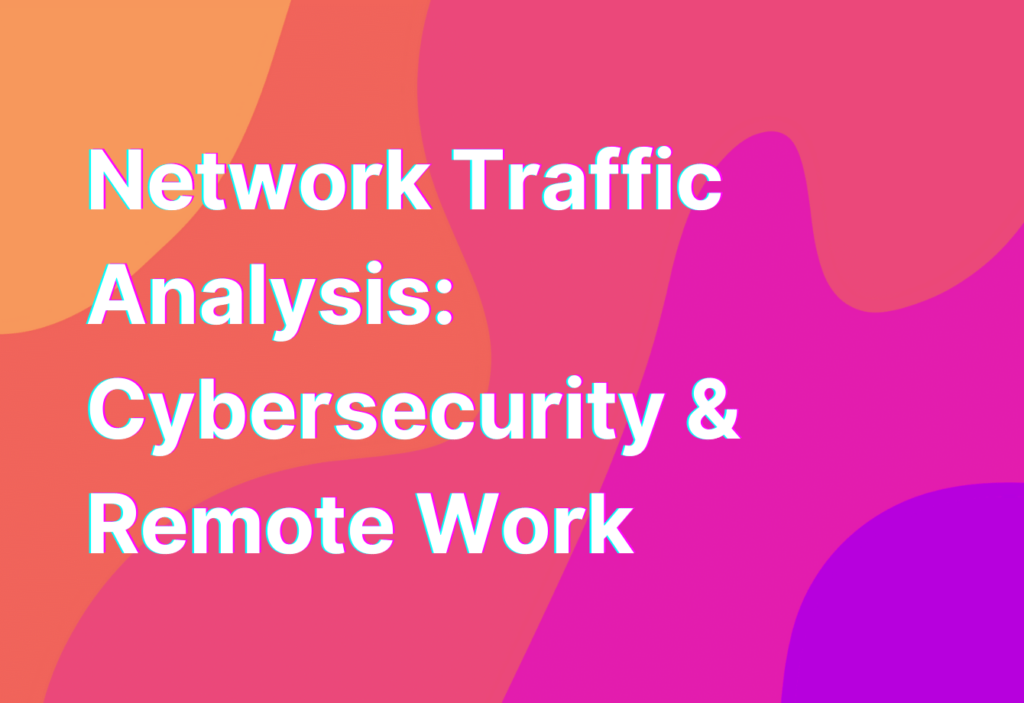Network Traffic Analysis: Cybersecurity & Remote Work
Hey there, remote work enthusiasts! It’s Ashley here, your friendly remote work advocate with 10 years of experience in the tech industry. Today, I want to talk about a crucial aspect of remote work that often gets overlooked: network traffic analysis. Now, I know what you’re thinking – “Ashley, that sounds super technical and boring!” But trust me, it’s not as intimidating as it sounds, and understanding network traffic analysis is essential for maintaining cybersecurity while working remotely. So, let’s dive in!
What is Network Traffic Analysis?
Network traffic analysis is the process of capturing, inspecting, and analyzing network data to gain insights into the behavior and security of a network. In simpler terms, it’s like being a detective who investigates the traffic flowing through your network to identify any suspicious or malicious activities. By analyzing network traffic, you can detect and prevent cyber threats, such as malware infections, data breaches, and unauthorized access attempts.
Now, you might be wondering, “How does network traffic analysis relate to remote work?” Well, when you work remotely, you rely heavily on your internet connection and the network infrastructure provided by your company. Analyzing network traffic helps ensure the security and integrity of your remote work environment, protecting both your personal and company data.
The Importance of Network Traffic Analysis for Remote Work
As a remote worker, you’re likely accessing sensitive company information, communicating with colleagues, and using various online tools and platforms. All of this activity generates network traffic that needs to be monitored and analyzed to prevent potential security breaches. Here are a few reasons why network traffic analysis is crucial for remote work:
- Identifying Malicious Activities: Network traffic analysis allows you to detect any unusual or suspicious network behavior that could indicate a cyber attack. By analyzing patterns and anomalies in network traffic, you can identify potential threats and take appropriate action to mitigate them.
- Preventing Data Loss: Remote work often involves accessing and transferring sensitive data. Network traffic analysis helps you monitor data flows and identify any unauthorized attempts to access or exfiltrate data. This allows you to take immediate action to prevent data loss or leakage.
- Protecting Against Malware: Malware is a significant threat to remote workers. By analyzing network traffic, you can detect and block malicious software attempting to enter your network. This helps protect your devices and data from potential damage or compromise.
- Ensuring Compliance: Many industries have strict compliance regulations regarding data security and privacy. Network traffic analysis helps you monitor and enforce compliance measures, ensuring that your remote work setup meets the necessary standards.
- Improving Network Performance: Network traffic analysis provides insights into network usage, bandwidth consumption, and application performance. By analyzing this data, you can optimize your network infrastructure and improve the overall performance of your remote work setup.
Now that we understand the importance of network traffic analysis let’s talk about some practical steps you can take to implement it in your remote work environment.
Implementing Network Traffic Analysis for Remote Work
1. Use a VPN: A Virtual Private Network (VPN) encrypts your internet connection, making it more secure and private. It also helps mask your IP address, making it harder for cybercriminals to track your online activities. Using a VPN is an essential first step in securing your network traffic.
2. Invest in a Next-Generation Firewall: A next-generation firewall provides advanced security features, such as intrusion prevention, deep packet inspection, and application-level control. It helps monitor and analyze network traffic, allowing you to detect and block potential threats.
3. Enable Network Monitoring Tools: Many network monitoring tools are available that provide real-time visibility into your network traffic. These tools help you identify any unusual or suspicious activities, allowing you to take immediate action.
4. Regularly Update and Patch Your Software: Keeping your software and applications up to date is crucial for network security. Updates often include security patches that address vulnerabilities and protect against potential threats.
5. Train Employees on Network Security: Educating your remote team about network security best practices is essential. Teach them about the importance of strong passwords, phishing awareness, and safe browsing habits. A well-informed team is your first line of defense against cyber threats.
By implementing these measures, you can significantly enhance the security of your remote work environment and protect your network traffic from potential cyber attacks.
Wrapping Up
Network traffic analysis is a critical aspect of maintaining cybersecurity while working remotely. By analyzing network traffic, you can detect and prevent cyber threats, protect sensitive data, and ensure compliance with industry regulations. Remember, implementing network traffic analysis measures, such as using a VPN, investing in a next-generation firewall, and enabling network monitoring tools, is essential for a secure remote work environment.
If you want to dive deeper into the world of cybersecurity and remote work, check out our article on penetration testing. It’s a fascinating topic that will give you valuable insights into securing your remote work setup.
Stay safe, stay secure, and keep rocking that remote work lifestyle!


